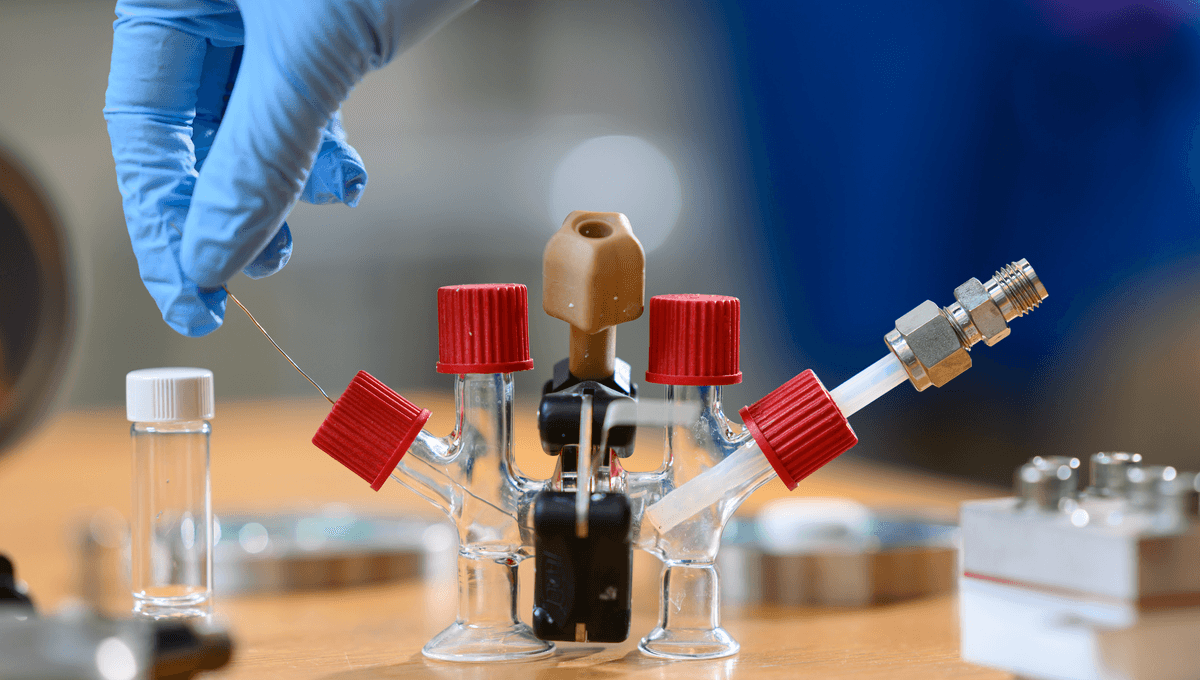
Fuel cells that react liquid sodium metal with air could be the power source required to give electric airplanes much longer ranges, a new paper has proposed. The idea has yet to leave the laboratory bench, but the authors have demonstrated energy-to-weight ratios other technologies can only dream about.
In a world hungry for low-pollution alternatives, long-distance travel is one of the hardest things to decarbonize. Electric airplane companies have started demonstrating production-ready models, and their products are even being used for training flights. Nevertheless, the models are currently small and limited to relatively short distances, only suited to niche markets without major upgrades.
Going cross-continental, let alone intercontinental, is much harder, because the batteries needed to power a flight like that weighs too much. Existing alternatives have their own problems, so Professor Yet-Ming Chiang of Massachusetts Institute of Technology and colleagues decided it was time for some out-of-the-box thinking. Their answer is to react liquid metal sodium in a fuel cell with oxygen from the air.
“We expect people to think that this is a totally crazy idea,” Chiang said in a statement. “If they didn’t, I’d be a bit disappointed because if people don’t think something is totally crazy at first, it probably isn’t going to be that revolutionary.”
Fuel cells themselves are not a revolutionary idea. Hydrogen fuel cells were once the favored technology for zero emissions road transport, but battery technology has progressed a lot faster. Today, battery electric cars not only dominate the market for low-carbon passenger cars, but are increasingly beating hydrogen in buses and trucks where it was once thought to have the advantage. Hydrogen fuel cells for aviation still have advocates, but confidence is shrinking.
Sodium is a lot heavier than hydrogen (although so is everything else) so it seems like an odd choice when weight is of the essence. However, practical hydrogen storage weighs much more than the fuel itself, which shouldn’t be the case for a metal that melts at just below the boiling point of water.
The fuel cell’s chemistry uses the same reaction as sodium-air batteries, which have already been extensively explored, including by Chiang himself. However, batteries need to be fully rechargeable, and that has been hard to implement in practice, particularly if the oxygen they react with isn’t pure. In a fuel cell, once the sodium has reacted with oxygen the products (such as NaO2) are removed from the cell. This could be exhausted, as is done with current burnt fuel, or stored for industrial use on landing.
Airline emissions not only contain a lot of carbon dioxide and other pollutants, but when emitted under the wrong atmospheric conditions the black carbon particles almost double the greenhouse intensity of aviation. The sodium oxide these fuel cells release would instead combine with carbon dioxide at altitude to form sodium bicarbonate, actually removing carbon dioxide from the atmosphere.
Release in flight would cause a gentle rain of baking powder, but in such diffuse concentrations no one is likely to notice. The high pH of the product would even fight acid rain and ocean acidification, albeit probably not enough to provide a major benefit.
Only large-scale testing will reveal if the apparent triple win would come with some drawbacks, such as what might happen if the sodium oxide reacts with rarer pollutants.
“The threshold that you really need for realistic electric aviation is about 1,000 watt-hours per kilogram [wh/kg],” Chiang said, before acknowledging even that wouldn’t be enough to make transatlantic flights viable. However, 1,000 wh/kg would be sufficient for most regional flights, currently responsible for 30 percent of aviation emissions. Unfortunately, electric vehicle batteries are currently at around 300 wh/kg, and while there’s room for improvement it’s questionable how much progress is possible.
The laboratory version of the cell Chiang and colleagues built stores 1,200-1,540 wh/kg when mixed with air at controlled humidity depending on current per unit area extracted. The authors think this would drop to around 1,000 wh/kg in practical versions, but the results suggest the possibility of a higher ceiling.
A spin-off company, Propel Aero, has been formed to scale the technology, allowing demonstrations with drones and testing for unforeseen negative consequences.
For the moment, however, the largest hurdle appears to be the production of sodium metal at an affordable price. Dumping sodium oxide, rather than reusing it in a battery, means vastly larger amounts will be required.
The raw material is not an issue, since the element is the sixth most abundant in the crust and half of sea salt. The world used to make a lot more sodium than it does today, as 200,000 tons were produced each year in the United States alone as a feedstock in the production of the now-banned tetraethyl lead petrol additive. Chiang notes that this proves it can be made and distributed safely, but the price is likely to depend on whether the chlorine released in production would saturate current markets.
Co-first author PhD candidate Karen Sugano noted that the one unexpected feature already revealed in testing is that the humidity of the air the sodium reacts to determines if the waste will be released in liquid or solid form. That makes meant humid air much better. “The key was that we can form this liquid discharge product and remove it easily, as opposed to the solid discharge that would form in dry conditions,” Sugano said. Dry stratospheric air would need to be mixed with water vapor to maintain efficiency.
If the work ever comes to fruition, frequent air travelers might repay their historical carbon debt by flying planes whose waste absorbs carbon dioxide. We’d suggest it’s a bit early, however, to think you can take the tropical holiday you’ve been dreaming about guilt-free on the expectation a future flight will cancel it out.
The study is published in the journal Joule.
Source Link: Liquid Metal Sodium Fuel Cells Could Enable Air Transport That Captures, Not Releases, Carbon Dioxide